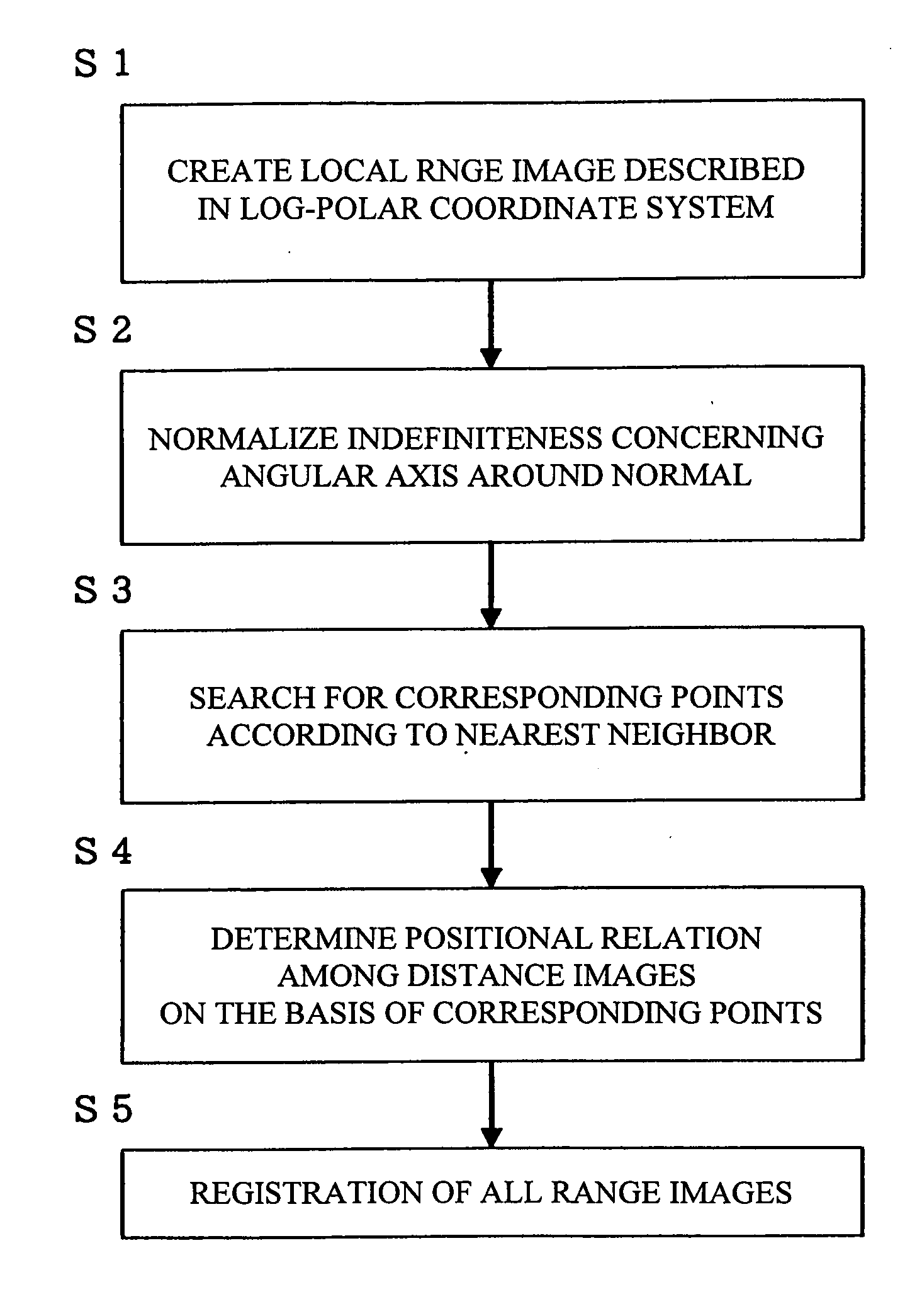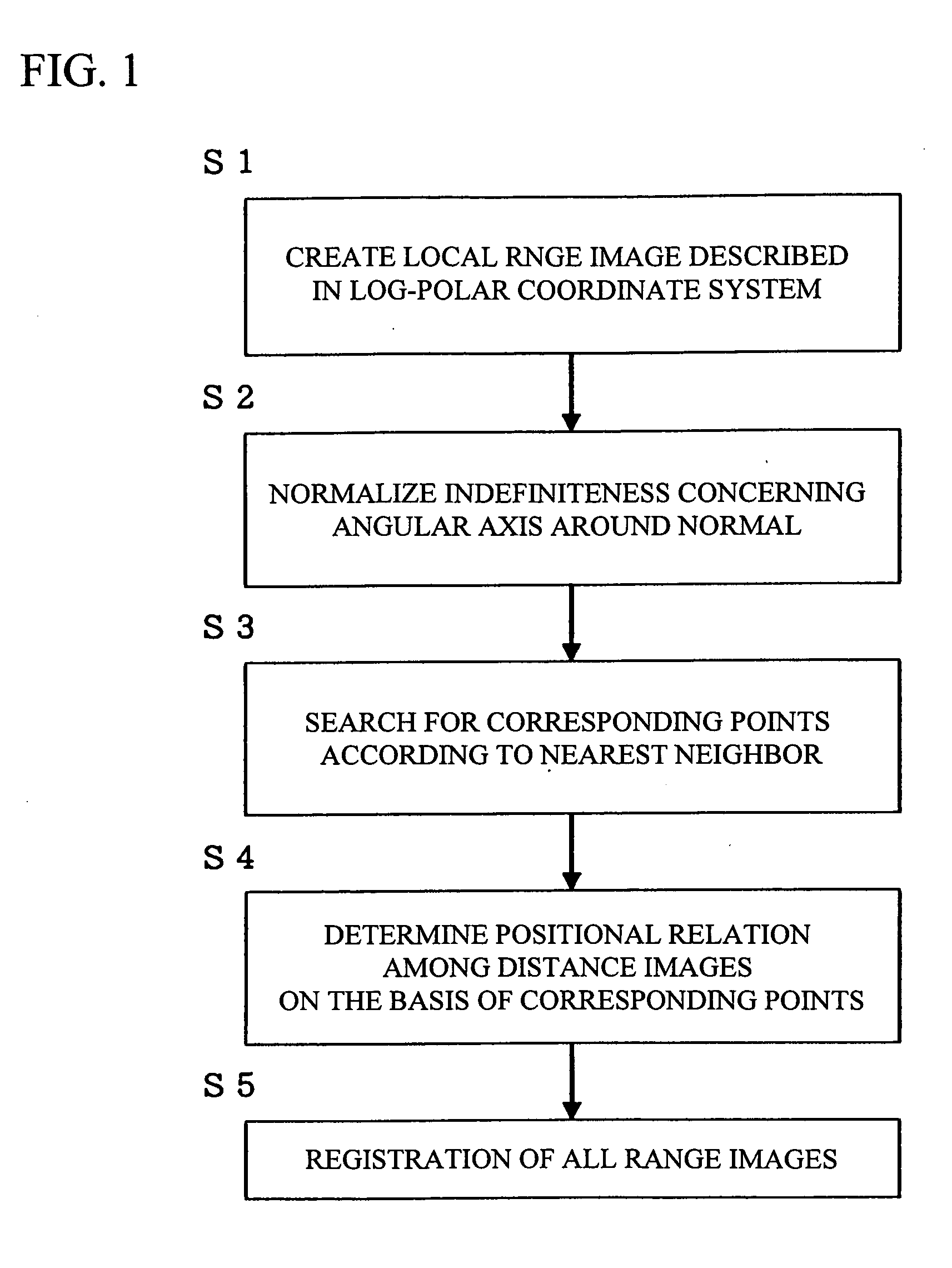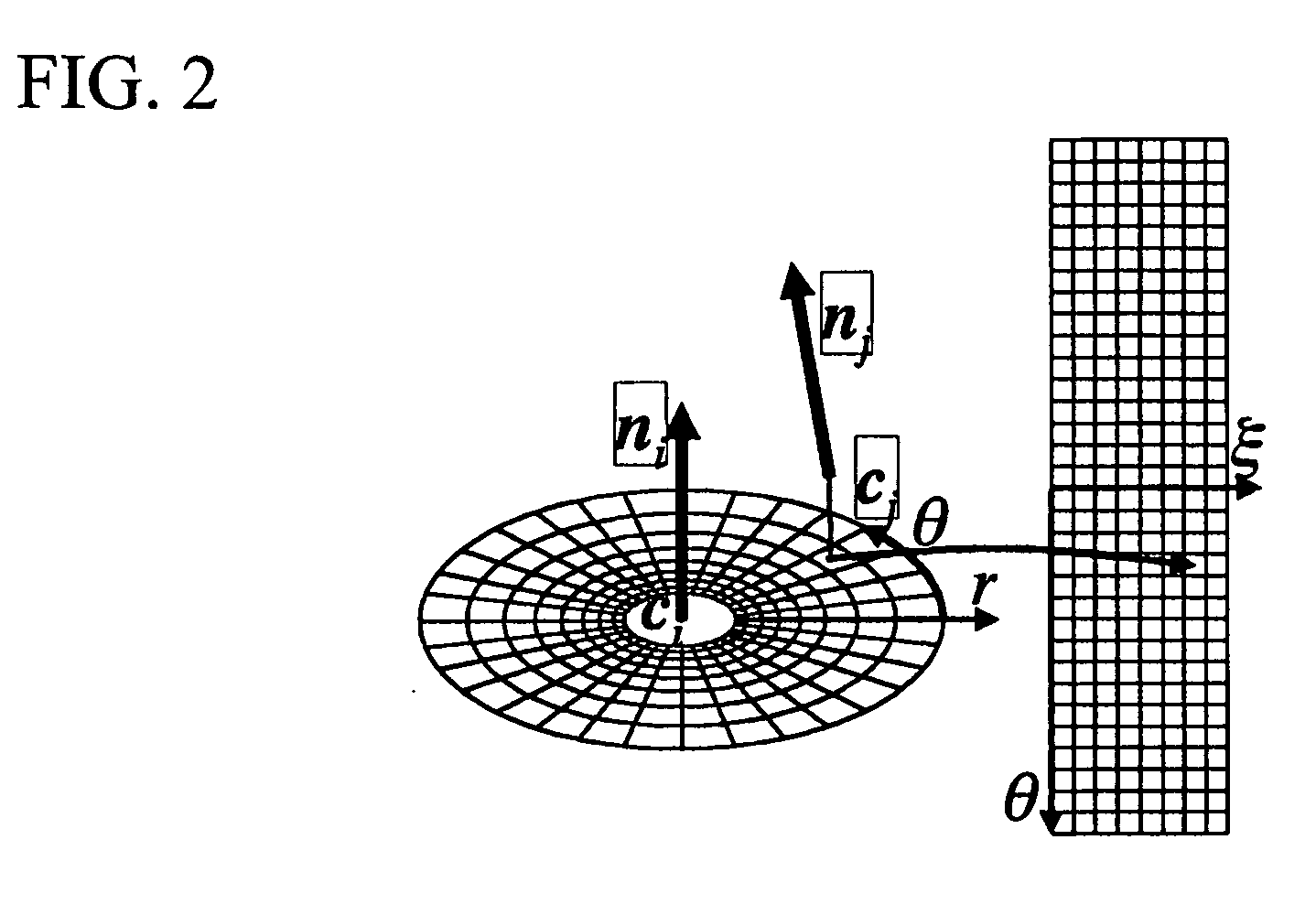Method And Program For Registration Of Three-Dimensional Shape
a three-dimensional shape and program technology, applied in the field of three-dimensional shape registration methods and programs, can solve the problems of stability and description ability, device cannot always be used, and the stability of segmentation and robustness against occlusion
- Summary
- Abstract
- Description
- Claims
- Application Information
AI Technical Summary
Benefits of technology
Problems solved by technology
Method used
Image
Examples
example 1
[0105]The range image used in the explanation of the method described above is a data set called ‘Bunny’ acquired from the Stanford 3D Scanning Repository (see Non-Patent Document 29). The data set is formed by ten range images in total (FIG. 5). An object had a size of about 25 cm and the signed distance field SDF was created at a sampling interval of δ=4 mm. As local Log-Polar range images, NFLR=19156 images in total were created with a setting of Nθ=16, R=8, and DFLR=11×16=176. These images were compressed by D=8 peculiar images (FIG. 3) and an accumulation contribution ratio at that point was 92.9%. Nearest points for 17916 points were searched with determined by the method described above. Among the points, 3711 pairs were pairs of corresponding points that were nearest neighbors each other. 1129 pairs were left by verification by cross-correlation, 462 pairs were left as inliers by verification of rigidity, and a View Tree was formed by 366 pairs of corresponding points (FIG. ...
example 2
[0108]The proposed method was applied to ‘Dragon’ data set also acquired from the Stanford 3D Scanning Repository (see Non-Patent Document 29) (FIG. 7). FIG. 7 is a diagram showing a result of coarse registration of input range images (on the left of the figure), an integrated shape model (in the middle of the figure) obtained by simultaneously registering the input range images, and a fine integrated shape model (on the right of the figure) created.
[0109]The ‘Dragon’ data set includes seventy range images in total. First, coarse registration was applied to thirty range images among the range images by the proposed method. A size of an object was set to about 25 cm, δ was set to 4 mm, Nθ was set to 8, R was set to 4, and DFLR was set to 8. 38745 local Log-Polar range images were created, a View Tree was formed by 609 pairs of corresponding points, and correction by pairs of corresponding points was performed using 738 pairs (on the left in FIG. 7). A calculation time was about 1 hou...
PUM
 Login to View More
Login to View More Abstract
Description
Claims
Application Information
 Login to View More
Login to View More - R&D
- Intellectual Property
- Life Sciences
- Materials
- Tech Scout
- Unparalleled Data Quality
- Higher Quality Content
- 60% Fewer Hallucinations
Browse by: Latest US Patents, China's latest patents, Technical Efficacy Thesaurus, Application Domain, Technology Topic, Popular Technical Reports.
© 2025 PatSnap. All rights reserved.Legal|Privacy policy|Modern Slavery Act Transparency Statement|Sitemap|About US| Contact US: help@patsnap.com



